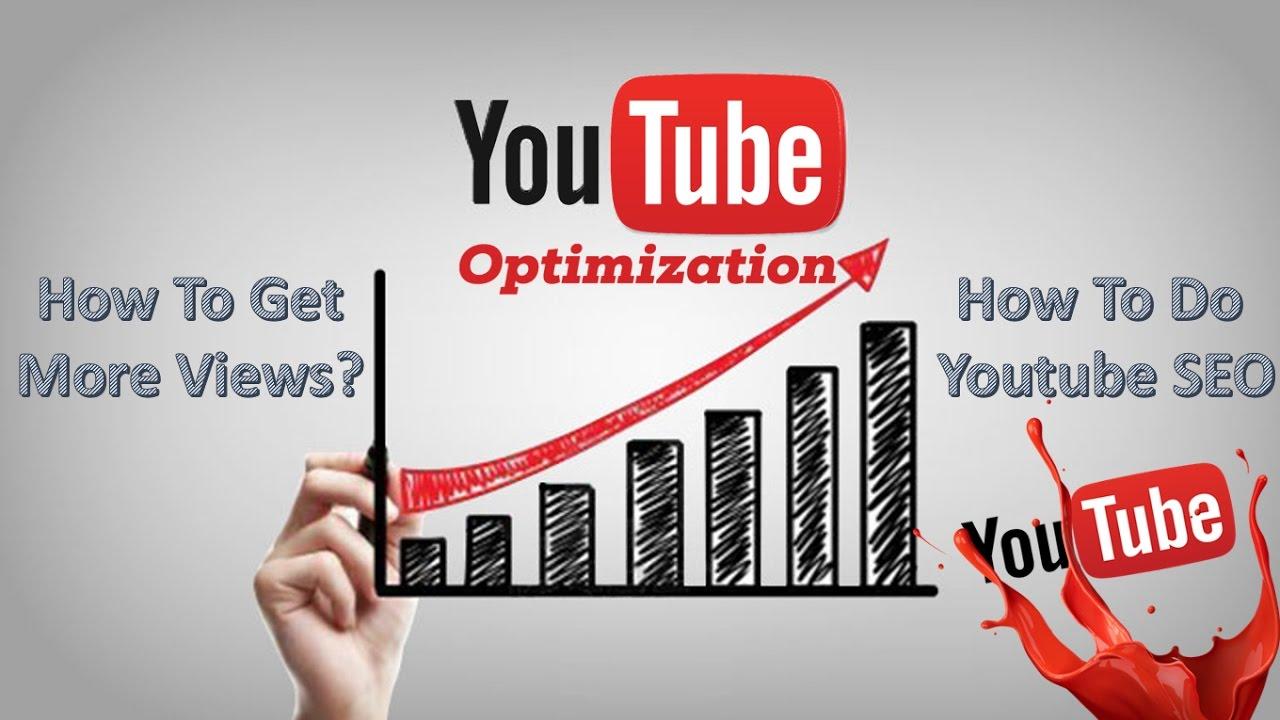
Introduction:
In today’s digital landscape, creating outstanding content is just the beginning of the journey. You’ve poured your heart into crafting the perfect blog post, video, or infographic. But what happens when you hit “publish”? If no one sees it, it’s like throwing a party and forgetting to send out the invitations! That’s where a solid content distribution strategy comes into play. With the right techniques, you can ensure your valuable content reaches the right audience, drives engagement, and ultimately helps you achieve your goals.
Whether you’re a seasoned marketer or just starting out, understanding how to effectively distribute your content can be a game-changer. In this article, we’ll explore 15 proven techniques that will elevate your content distribution strategy. From leveraging social media to harnessing the power of email marketing and exploring partnerships, these strategies are designed to maximize your reach and impact. So, let’s dive in and transform how your content is discovered, shared, and appreciated!
Understanding the Importance of a Solid Content Distribution Strategy
In today’s digital landscape, merely creating high-quality content is not enough to guarantee success. A comprehensive content distribution strategy is crucial for amplifying your reach and ensuring that your audience engages with your material. By understanding the nuances of distribution, you can significantly enhance your content’s visibility and effectiveness.
A well-defined content distribution strategy allows you to:
- Maximize Audience Engagement: The right distribution channels connect you with your target audience where they already spend their time.
- Increase Brand Awareness: Consistent distribution across multiple platforms helps reinforce brand identity and visibility.
- Drive More Traffic: Effective content distribution can significantly boost website traffic, leading to higher conversion rates.
- Enhance SEO Performance: Quality backlinks from shared content can improve your search engine ranking, driving organic reach.
It’s important to recognize that not all content is suited for every platform. Tailoring your approach ensures that your message resonates with the audience best suited for each channel. For instance, long-form articles may perform well on your blog, but quick, engaging snippets might be more effective on social media platforms. Consider the following to optimize your strategy:
- Content Adaptation: Customize content formats to fit the platform—infographics for Instagram, videos for TikTok, and articles for LinkedIn.
- Optimal Timing: Analyze when your audience is most active and schedule your posts accordingly to maximize engagement.
- Use of Analytics: Regularly assess the performance of your distributed content to refine your strategy based on what resonates with your audience.
Furthermore, collaborating with influencers and industry leaders can extend your reach. These partnerships can provide access to a broader audience and lend credibility to your content. Consider building relationships with individuals who align with your brand values; their endorsement can be invaluable.
Additionally, utilizing paid promotion can complement your organic efforts. Platforms like Facebook and Google Ads offer targeted advertising options that can amplify your reach to specific demographics, ensuring your content doesn’t just exist but actively engages potential customers.
Building a solid content distribution strategy is not a one-time effort; it requires ongoing optimization and adaptation. Staying informed about emerging platforms and evolving trends will help keep your approach fresh and effective. By dedicating time and resources to this aspect of your marketing strategy, you’ll not only enhance your content’s reach but also strengthen your overall brand narrative.
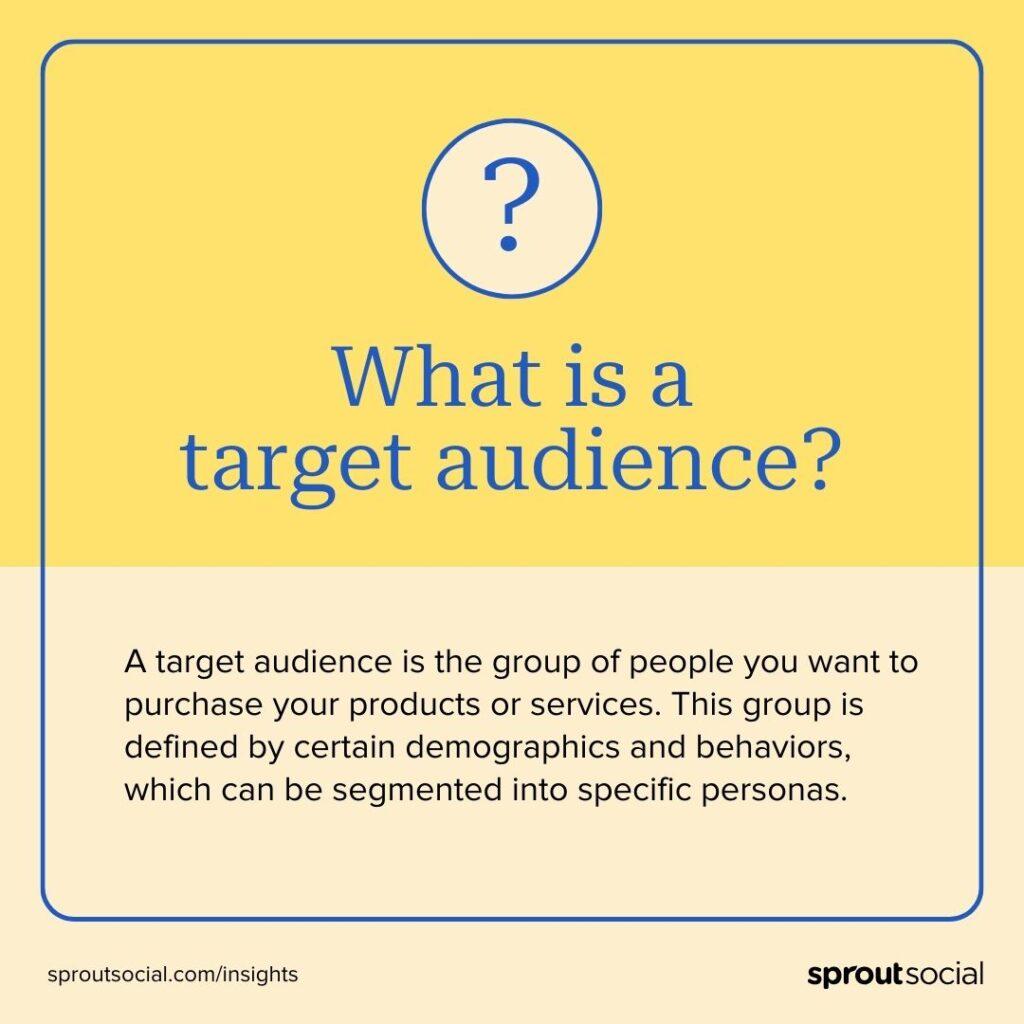
Identifying Your Target Audience for Maximum Impact
Understanding your audience is the cornerstone of any successful content distribution strategy. Without a clear picture of who you’re speaking to, your efforts can easily fall flat. Start by digging deep into the demographics of your audience. Consider factors such as:
- Age: Which age groups are most likely to engage with your content?
- Gender: Does your content appeal more to one gender over another?
- Location: Are there geographical areas where your content performs better?
- Interests: What hobbies or interests does your audience have that align with your content?
Once you’ve identified these parameters, it’s time to create detailed audience personas. These personas are fictional representations of your ideal audience, combining your research with qualitative insights. A well-defined persona might include:
| Persona | Age | Interests | Challenges |
|---|---|---|---|
| Tech-Savvy Millennial | 25-35 | Gadgets, Social Media | Information Overload |
| Health-Conscious Parent | 30-45 | Wellness, Family Activities | Time Management |
| Retired Lifestyle Enthusiast | 60+ | Travel, Hobbies | Finding Relevant Content |
By having these personas in mind, you can tailor your content to address their specific needs and preferences. This targeted approach not only enhances engagement but also encourages sharing, which amplifies your reach. Remember, the more relevant your content is to your audience, the more likely they are to interact with it.
Additionally, leverage social media platforms to gather insights directly from your audience. Polls, surveys, and even casual conversations can provide invaluable feedback regarding their preferences. Don’t hesitate to ask questions like:
- What type of content do you find most valuable?
- Which platforms do you use most frequently to consume content?
- How do you prefer to engage with brands or content creators?
don’t overlook the importance of analytics tools. Platforms like Google Analytics, Facebook Insights, and Twitter Analytics are treasure troves of information that can help you fine-tune your strategy. Track metrics such as:
- Engagement Rates: Which pieces of content are sparking discussions?
- Traffic Sources: Where are your visitors coming from?
- Demographic Data: Are you reaching your intended audience?
By continuously monitoring these insights, you can adjust your content distribution strategy on the fly, ensuring maximum impact with every piece of content you share.
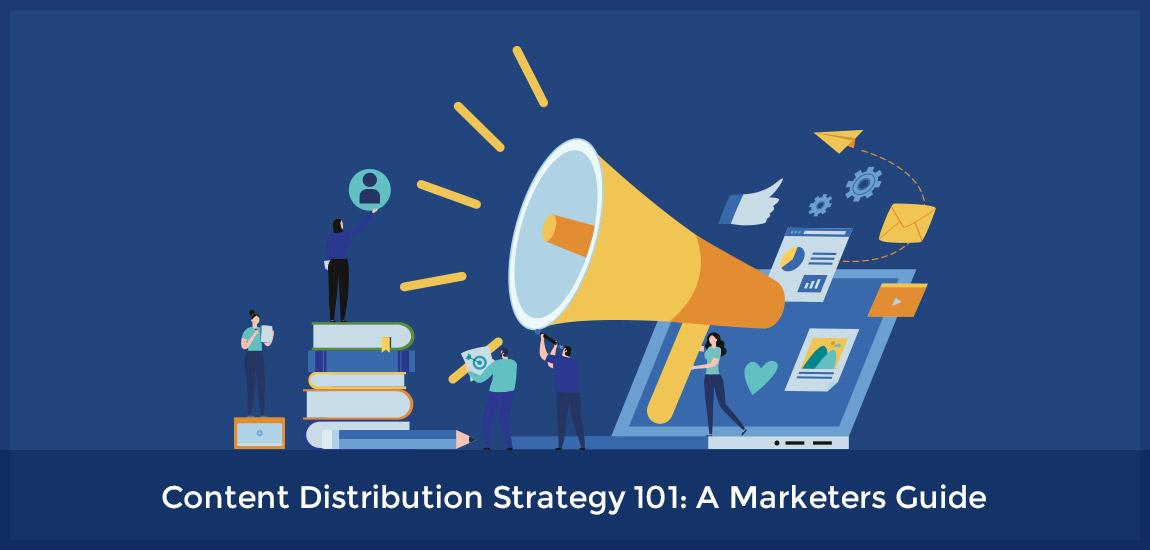
Choosing the Right Platforms for Your Content
In the vast ocean of digital marketing, selecting the right platforms for distributing your content can make all the difference between engaging your audience and getting lost in the noise. With numerous options available, it’s crucial to identify where your target audience spends their time and how they consume content. Here are some key considerations to help you make informed choices.
Understand Your Audience
The first step in platform selection is knowing your audience intimately. Are they professionals on LinkedIn, creatives on Instagram, or casual browsers on Facebook? Utilize analytics tools to gather insights on demographics, interests, and behaviors. This understanding will guide you in choosing a platform that resonates with them.
Consider Content Type
Your content type plays a significant role in platform selection. For example:
- Visual Content: Platforms like Instagram and Pinterest are ideal for photos and infographics.
- Long-Form Articles: Medium or LinkedIn can be good homes for in-depth discussions and thought leadership pieces.
- Videos: YouTube and TikTok are optimal for engaging video content, catering to different audience preferences.
Evaluate Engagement Potential
Not all platforms offer the same level of engagement. Some may have high traffic but low interaction rates. Look for platforms that encourage conversation and community building. For instance, Reddit fosters niche communities where your content can spark discussions, while Facebook groups can provide targeted engagement opportunities.
Assess Resource Availability
Different platforms require different levels of investment in terms of time and resources. If you have a small team, focus on a few key platforms where you can consistently produce quality content. A simple table can help visualize this:
| Platform | Resource Demand | Content Format |
|---|---|---|
| High | Images, Stories | |
| Medium | Articles, Posts | |
| Low | Threads, Images |
Test and Adapt
Once you’ve selected your platforms, the journey doesn’t end there. Monitor your content’s performance rigorously. Use A/B testing to see what resonates best, and be prepared to pivot your strategy based on real-time feedback. Remember, the digital landscape is always evolving, and flexibility can be your greatest asset.
Stay Updated on Trends
Lastly, keep your finger on the pulse of emerging platforms and trends. New social media channels and technologies can quickly change the game. Experimenting with platforms like Clubhouse or newer visual formats can give you a competitive edge as you reach out to your audience in fresh and engaging ways.
Leveraging Social Media to Boost Your Reach
In today’s digital landscape, social media is more than just a platform for sharing personal moments; it’s a powerful tool for expanding your reach and engaging with your audience. To effectively leverage social media, consider these strategies that can amplify your content distribution efforts:
- Identify Your Audience: Understanding who your audience is will help you tailor your content to their preferences. Use analytics tools to gather insights about demographics, interests, and online behaviors.
- Choose the Right Platforms: Not all social media platforms are created equal. Focus on those where your audience is most active. For instance, if you’re targeting professionals, LinkedIn might be your best bet, while Instagram is ideal for visually driven content.
- Craft Engaging Visuals: Posts with images or videos tend to perform better. Invest time in creating high-quality graphics or short videos that resonate with your audience and your brand message.
- Utilize Hashtags Wisely: Hashtags can increase your visibility. Use relevant hashtags to broaden your reach while avoiding overly popular ones that might drown your content.
- Encourage User-Generated Content: Engage your followers by encouraging them to share their own content related to your brand. This not only boosts engagement but also fosters a sense of community.
Incorporating consistent branding across all platforms is crucial. Make sure your profile pictures, bios, and post styles are uniform, which builds recognition and trust. Here’s a simple table to illustrate some branding elements to maintain across social channels:
| Brand Element | Consistency Tips |
|---|---|
| Profile Picture | Use the same image across platforms. |
| Color Palette | Stick to a select few colors that reflect your brand. |
| Bio Information | Keep your bio concise with key information. |
Timing is also everything. Experiment with different posting schedules to determine when your audience is most active. Tools like Buffer or Hootsuite can help automate posting and analytics, allowing you to focus on creating great content.
Lastly, don’t underestimate the power of collaboration. Partnering with influencers or brands that align with your values can expose you to a broader audience. A well-crafted partnership can lead to mutual benefits, such as co-hosting events or sharing each other’s content.
Email Marketing as a Powerful Distribution Tool
Email marketing remains one of the most effective methods for distributing content directly to your target audience. Unlike other channels, it offers unparalleled access to your subscribers, allowing you to communicate with them directly in their inboxes. This direct line of communication can significantly enhance your content distribution strategy.
One of the greatest advantages of email marketing is its ability to deliver highly segmented content. By analyzing subscriber behavior and preferences, you can tailor your emails to match their interests. This personalization not only boosts engagement but also fosters a sense of connection between your brand and your audience.
Consider these key benefits of using email marketing as a distribution tool:
- High ROI: Email marketing boasts an average return on investment of $42 for every dollar spent.
- Direct Access: Emails land directly in the inbox, ensuring that your content is seen by those who are already interested.
- Measurable Results: With detailed analytics, you can track open rates, click-through rates, and conversions to refine your approach.
- Engagement Opportunities: Emails can include calls to action that drive traffic to your website or encourage social sharing.
To maximize the impact of your email marketing campaigns, consider integrating different types of content. This could include:
- Blog posts that provide valuable insights or solutions.
- Video content that engages and informs your audience.
- Infographics that present data in a visually appealing manner.
- Exclusive offers or promotions that encourage immediate action.
Another effective tactic is to create a content calendar for your email campaigns. This helps in organizing your messaging and ensuring a consistent flow of content. You can plan themed emails that align with holidays, events, or specific marketing goals. Consistency not only builds anticipation but also helps in developing brand loyalty.
For those who may be skeptical about the effectiveness of email marketing, consider the following statistics:
| Statistic | Value |
|---|---|
| Open Rate of Email Marketing | Approximately 20% to 30% |
| Click-Through Rate | About 2% to 5% |
| Users Prefer Email for Promotions | 70% of consumers |
don’t overlook the importance of ongoing testing and optimization. A/B testing your subject lines, content layout, and sending times can uncover what resonates best with your audience. By continually refining your approach based on performance data, you can drive even greater results from your email marketing efforts.

Utilizing Influencer Partnerships for Expanded Visibility
In today’s fast-paced digital landscape, partnering with influencers can significantly enhance your brand’s visibility and reach. Utilizing influencers effectively allows you to tap into their established trust and credibility with their audience. This strategy not only amplifies your message but also engages communities that align with your brand values.
To maximize the impact of influencer partnerships, consider the following key strategies:
- Identify the Right Influencers: Look for influencers whose audience resonates with your brand. Tools like BuzzSumo and Upfluence can help you find individuals with the right demographics and interests.
- Build Genuine Relationships: Engage authentically with influencers. Comment on their posts, share their content, and establish a rapport before pitching collaborations.
- Create Engaging Campaigns: Work with influencers to co-create content that reflects both their style and your brand message. This could include product reviews, giveaways, or storytelling campaigns.
It’s essential to track the performance of your influencer partnerships. An effective way to do this is through dedicated tracking links or unique promo codes that can help you measure traffic and conversions stemming from the collaboration. Here’s a simple table to illustrate some performance metrics you might want to track:
| Metric | Description | Purpose |
|---|---|---|
| Engagement Rate | Interactions (likes, comments, shares) divided by total followers | To gauge audience interest |
| Reach | Total number of unique users who saw the post | To assess visibility |
| Conversion Rate | Percentage of users who took action (e.g., purchase or sign-up) | To measure campaign effectiveness |
Another essential aspect is ensuring that your influencer partnerships are compliant with regulations. Clearly communicate expectations and ensure that influencers disclose their partnerships with your brand appropriately. Transparency fosters trust, which is vital in maintaining authentic relationships with audiences.
don’t forget to repurpose the content generated through these collaborations. Share influencer posts on your own channels, create highlight reels from videos, or compile testimonials into a powerful visual showcase. By extending the life of the content, you can continue to benefit from the influencer’s reach and engagement long after the initial campaign has concluded.
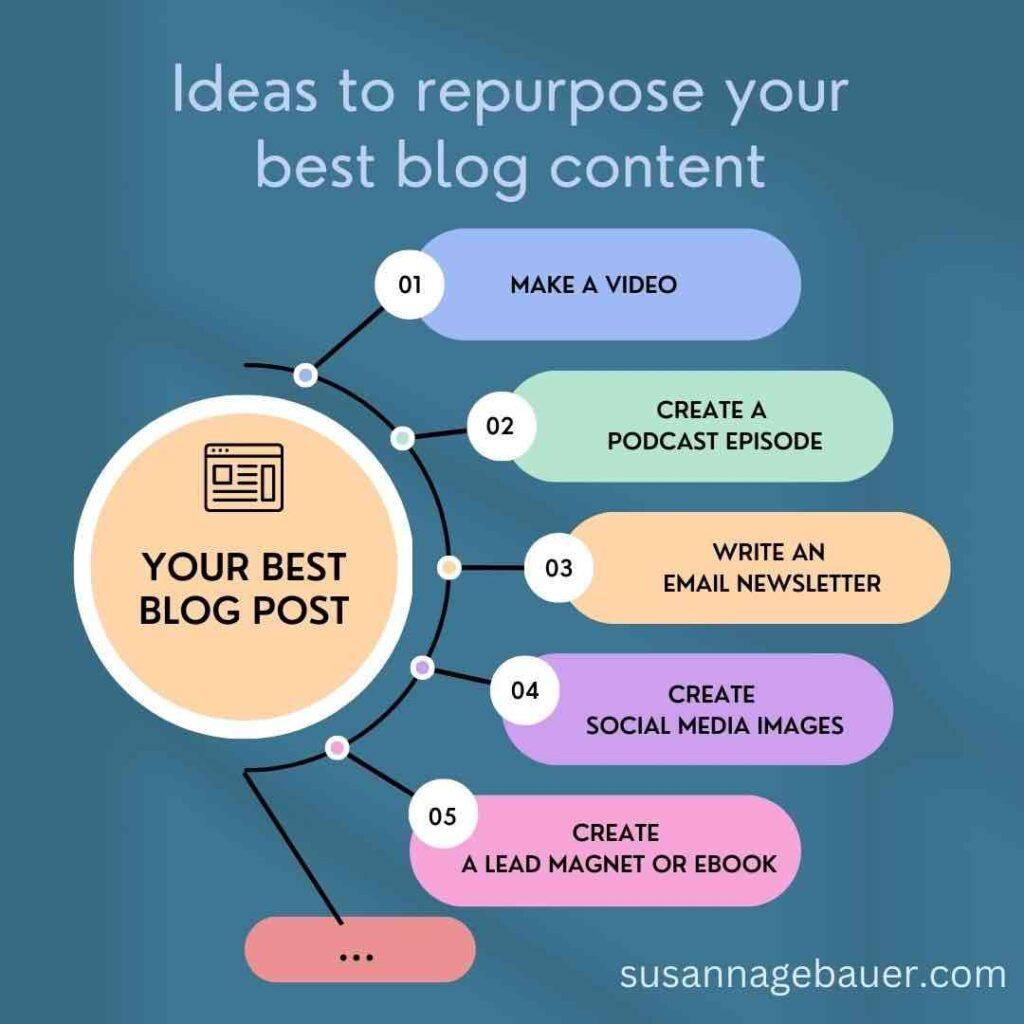
Repurposing Content for Different Channels
Repurposing content is not just a time-saver; it’s a brilliant strategy for maximizing your reach and engagement. By adapting your existing content for various platforms, you can tap into different audience preferences while reinforcing your brand message. Here are some effective ways to transform your original content into multiple formats:
- Blog to Video: Turn your blog posts into engaging videos. Use visuals, animations, and voiceovers to make the content more dynamic.
- Podcast Episodes: Convert written content into podcast discussions. This allows you to reach those who prefer audio formats during their commutes or workouts.
- Infographics: Summarize complex data or processes from your articles into visually appealing infographics. These can be easily shared on social media platforms.
- Social Media Snippets: Extract quotes or key insights from your content to create bite-sized posts for platforms like Twitter, Instagram, or LinkedIn.
- eBooks: Compile a series of related blog posts into a comprehensive eBook, providing value to your audience while building your email list.
Moreover, consider the specific characteristics of each platform when repurposing content. For example, the tone and format that work well on Instagram may not resonate on LinkedIn. Tailoring content to fit the platform can significantly enhance engagement. Here’s a quick comparison:
| Platform | Content Type | Best Practices |
|---|---|---|
| Images & Stories | Use high-quality visuals, hashtags, and interactive elements. | |
| YouTube | Videos | Keep videos concise, use engaging thumbnails, and include calls-to-action. |
| Long-Form Articles | Share industry insights and professional experiences; keep it professional. |
don’t forget to promote your repurposed content across channels. Cross-linking your content not only drives traffic but also reinforces your message. For instance, you can share your video on social media with a link back to the original blog post for those who want a deeper dive. This strategy not only enhances visibility but also encourages diverse interactions with your brand.
By consistently repurposing your content, you create a sustainable distribution strategy that saves time and amplifies your message. Embrace this approach, and watch your content reach new heights across various channels!
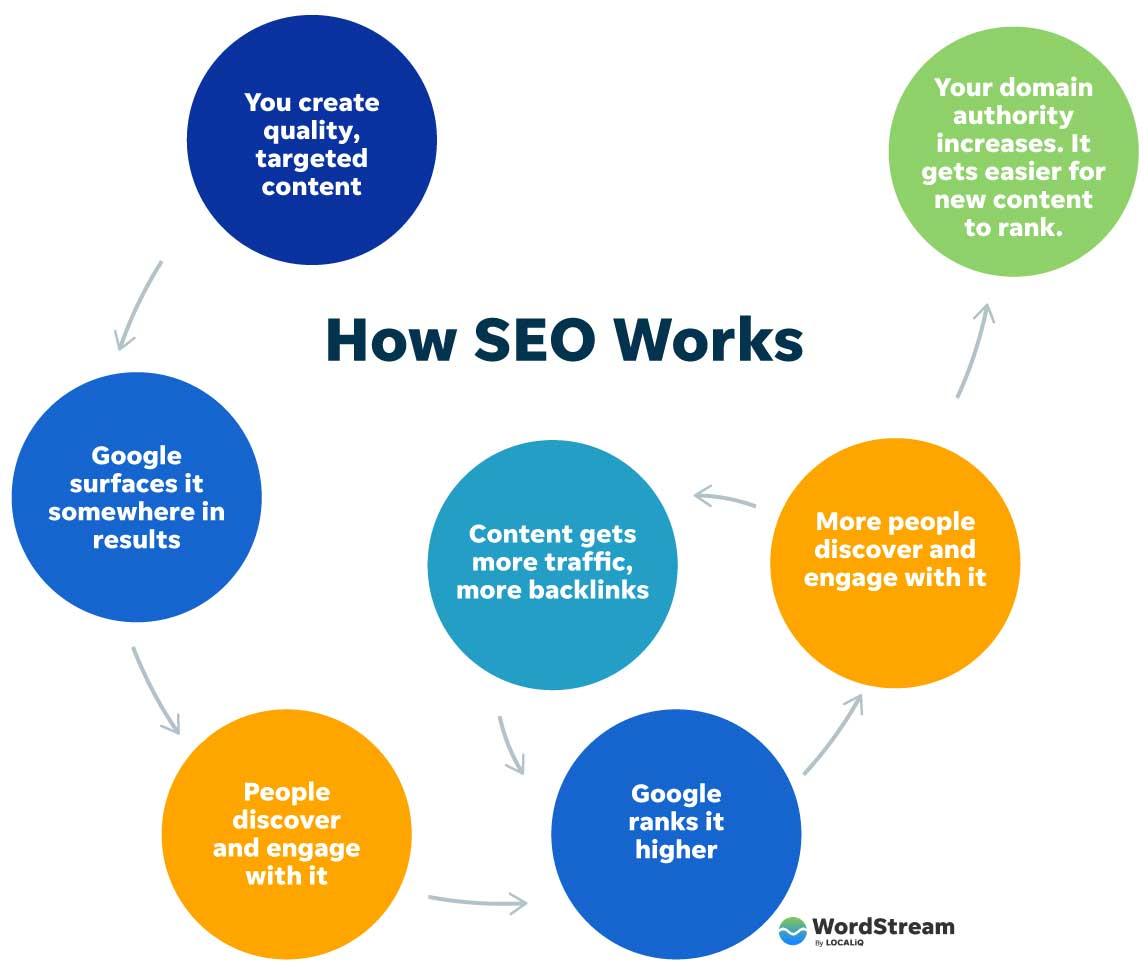
SEO Optimization: Making Your Content Easy to Find
When it comes to attracting an audience, SEO optimization is your best friend. By understanding and implementing effective SEO strategies, you can ensure that your content is not only high-quality but also easy to find. Here are some key techniques to elevate your content’s visibility:
- Keyword Research: Identify the terms and phrases that your target audience is searching for. Tools like Google Keyword Planner and SEMrush can be invaluable in this step.
- On-Page SEO: Optimize your content’s titles, headings, and meta descriptions. Make sure to use keywords naturally throughout your text without overstuffing.
- Internal Linking: Create a network of links within your own content. This not only helps with SEO but keeps readers engaged, encouraging them to explore more of your site.
- Image Optimization: Don’t overlook your visuals! Use descriptive file names and alt text for images, which helps search engines understand your content better.
Another vital aspect is the technical side of SEO. Ensure your website is mobile-friendly, as a significant portion of searches occurs on mobile devices. A responsive design can significantly improve user experience and SEO rankings. Additionally, consider the loading speed of your site; slow pages drive users away and negatively impact your search engine ranking.
Content freshness matters too. Regularly update your articles and add new content to keep your audience engaged and signal to search engines that your site is active. Aim to publish new posts consistently—this tells search engines to crawl your site more frequently.
| SEO Technique | Benefits |
|---|---|
| Keyword Research | Increases relevance in search results |
| On-Page Optimization | Improves click-through rates |
| Internal Linking | Enhances navigation and user engagement |
| Mobile Optimization | Boosts user retention and ranking |
Lastly, utilize social media to amplify your content reach. Share your articles on platforms where your audience hangs out, and encourage shares and likes. The more your content circulates, the greater the chances it will attract backlinks, further enhancing your SEO value.
By incorporating these proven optimization techniques into your content distribution strategy, you can significantly enhance your chances of being discovered by your target audience. Remember, the goal is not just to create content, but to make it effortlessly accessible to those who need it most.

Engaging with Online Communities and Forums
is a powerful way to amplify your content distribution strategy. These platforms not only allow you to share your content but also to interact directly with your target audience, building relationships that can lead to increased visibility and trust.
Here are some techniques to effectively engage in these spaces:
- Choose the Right Communities: Not all forums are created equal. Identify communities that align with your niche or industry. This ensures your participation is relevant and appreciated.
- Be Authentic: Users can quickly spot insincerity. Approach discussions with genuine interest and offer value rather than purely promoting your content.
- Contribute Regularly: Establish yourself as a knowledgeable and active member by contributing regularly. Share insights, answer questions, and participate in discussions.
- Share Your Content Sparingly: While it’s important to promote your content, it should not be your only contribution. Balance self-promotion with valuable interactions.
- Use Engaging Visuals: When sharing content, include visuals such as infographics or videos that can spark interest and encourage clicks.
Remember, engagement is a two-way street. Be prepared to not only share your insights and content but also to listen and respond to community feedback. This interaction can help you refine your content strategy based on what your audience actually wants.
To keep track of your efforts and the impact of your engagement, consider using a simple tracking table:
| Community/Forum | Engagement Type | Date of Engagement | Results |
|---|---|---|---|
| Marketing Forum | Post & Respond | 2023-10-01 | 50 Clicks |
| Photography Group | Comment & Share | 2023-10-05 | 30 Clicks |
| Health Community | Answer Questions | 2023-10-10 | 20 Clicks |
By analyzing this data, you can identify which communities yield the best results and adjust your strategies accordingly. Engaging with online forums isn’t just about broadcasting your message; it’s about joining a conversation and becoming a part of the community. The relationships you build can lead to organic growth and a loyal audience that seeks out your content.
Don’t forget to leverage the power of social sharing. Many forums have built-in sharing options that allow you to distribute your content further with just a click. Utilizing these features extends your reach beyond the forum itself.
participating in online communities is an invaluable aspect of your content distribution strategy. By focusing on authentic interaction, regular contributions, and a willingness to listen, you can foster relationships that enhance your brand presence and drive more traffic to your content.
Harnessing the Power of Paid Advertising
Paid advertising offers a powerful way to amplify your content distribution strategy, ensuring that your message reaches the right audience at the right time. Unlike organic methods, which can take time to build momentum, paid ads provide immediate visibility. This speed can be crucial in a fast-paced digital landscape where attention spans are short and competition is fierce.
When leveraging paid advertising, here are some strategies to consider:
- Targeted Social Media Ads: Utilize platforms like Facebook, Instagram, or LinkedIn to reach specific demographics. Tailor your ads to different audience segments based on interests, behaviors, and location.
- Pay-Per-Click (PPC) Campaigns: Google Ads can help you capture traffic from users actively searching for topics related to your content. It’s a cost-effective method that allows you to pay only when users click on your ad.
- Retargeting: Re-engage visitors who have interacted with your site but didn’t convert. By displaying targeted ads to this audience, you can nurture them back into the purchase journey.
- Sponsored Content: Collaborate with influencers or respected publications in your industry. Sponsored posts can extend your reach significantly and lend credibility to your brand.
It’s essential to track the performance of your paid campaigns to understand what’s working. Tools like Google Analytics or Facebook Insights can provide valuable data. Consider focusing on the following metrics:
| Metric | Description |
|---|---|
| Click-Through Rate (CTR) | Measures how often people click on your ad versus how often it’s shown. |
| Conversion Rate | The percentage of users who take a desired action, like signing up or making a purchase. |
| Cost Per Acquisition (CPA) | The total cost of acquiring a customer through your ad campaign. |
Another aspect to consider is optimizing your ad creatives. Eye-catching visuals and compelling copy can make all the difference in capturing attention. Test different variations to see which resonates best with your audience. A/B testing is invaluable here; minor adjustments can lead to significantly higher engagement rates.
don’t forget the importance of aligning your ads with your overall content strategy. Ensure that the messaging, tone, and visuals are consistent with the content you’re promoting. This coherence builds trust and encourages users to engage with your brand on multiple platforms.
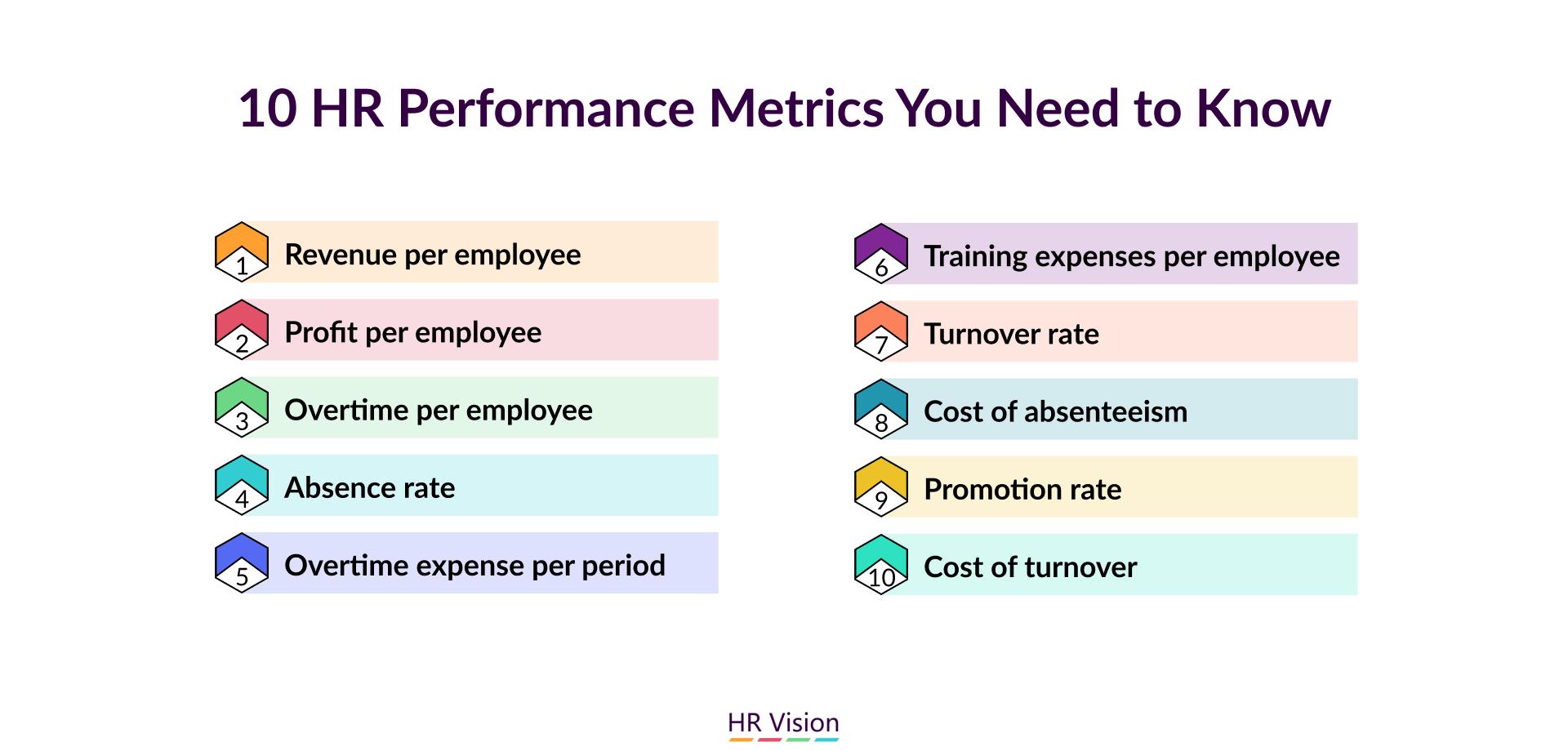
Tracking and Analyzing Performance Metrics
To truly optimize your content distribution strategy, you need to focus on . This is not just about collecting data; it’s about understanding how that data can guide your future decisions. By pinpointing what works and what doesn’t, you can refine your strategy for maximum impact.
First and foremost, identify the key performance indicators (KPIs) that matter most to your goals. Common metrics include:
- Engagement rates: Analyze likes, shares, comments, and overall interaction with your content.
- Traffic sources: Determine where your audience is coming from, whether it’s social media, organic search, or email marketing.
- Conversion rates: Track how many viewers take a desired action, such as signing up for a newsletter or making a purchase.
- Click-through rates (CTR): Assess the effectiveness of your headlines and calls to action by monitoring how many users click on the links within your content.
To gather this data, leverage tools like Google Analytics, social media insights, and email marketing dashboards. These platforms provide in-depth insights that can help you visualize and interpret your performance metrics. For example, Google Analytics can show you user behavior on your site, while social media tools can highlight which posts generated the most engagement.
It’s essential to create a performance dashboard that consolidates these metrics into an easily digestible format. This can be done using spreadsheet software or dedicated dashboard tools that allow you to visualize the data. Consider incorporating:
| Metric | Target Value | Current Value | Status |
|---|---|---|---|
| Engagement Rate | 5% | 6% | On Track |
| Conversion Rate | 3% | 2.5% | Needs Improvement |
| CTR | 10% | 12% | On Track |
Regularly review this dashboard to identify trends and anomalies. A sudden spike in engagement might indicate a post that resonates well with your audience, while a drop in conversion rates could signal a need for a content refresh or more compelling calls to action.
don’t hesitate to conduct A/B testing on various content pieces. By comparing different versions of your content, you can pinpoint what elements drive the best performance. This experimentation is crucial in understanding your audience’s preferences and optimizing your future content distributions.

Building Relationships with Journalists and Bloggers
Building strong connections with journalists and bloggers is a game-changer for any content distribution strategy. These relationships can significantly amplify your content’s reach and credibility. Here’s how you can foster and nurture these vital connections.
Start by researching the journalists and bloggers who align with your industry. Look for those who frequently write about topics relevant to your content. Understanding their style and focus will not only help you tailor your pitches but also demonstrate your genuine interest in their work.
Next, engage with them through social media. Follow their accounts, share their articles, and provide thoughtful comments. This will help you get on their radar before you even pitch them your content. Remember, authenticity is key; aim to build rapport rather than just seeking favors.
When you’re ready to reach out, personalize your pitch. Instead of sending generic emails, take the time to reference their past work and explain how your content complements their articles. Here’s a simple structure you might find useful:
- Personal Greeting: Address them by name to make it more personal.
- Compliment Their Work: Mention something specific you enjoyed about their recent piece.
- Value Proposition: Clearly articulate what’s in it for them and why your content is relevant.
- Call to Action: Encourage them to check out your content or suggest a collaboration.
Consider hosting exclusive events or webinars where you invite journalists and bloggers to participate. This not only provides them with valuable insights but also positions you as an industry leader. After the event, follow up with a thank-you note and any resources promised during the session.
Maintain an organized database of your contacts. Use tools like spreadsheets or CRM software to track your interactions, notes on conversations, and follow-up reminders. This will ensure that you manage these relationships effectively and can nurture them over time.
Lastly, don’t forget to provide value beyond your pitches. Share industry insights, offer guest posting opportunities, or assist them in their research. The more you contribute to their success, the more likely they are to support you in return.
| Relationship Building Tips | Benefits |
|---|---|
| Engage on social media | Increases visibility |
| Personalized pitches | Higher response rates |
| Host exclusive events | Strengthens connections |
| Provide ongoing value | Builds long-term partnerships |
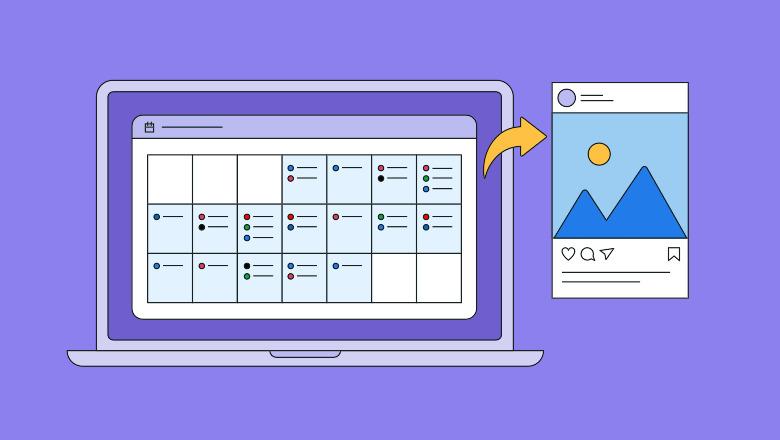
Creating a Content Calendar for Consistent Distribution
Creating a content calendar is a game-changer when it comes to maintaining a consistent distribution strategy. By planning your content in advance, you not only streamline your efforts but also ensure that your audience receives fresh content regularly. A well-structured calendar helps you visualize your distribution plan and keeps you accountable.
Start by defining the key elements of your content calendar. Consider including:
- Content Types: Identify the formats you’ll use—blogs, videos, infographics, etc.
- Publishing Dates: Choose specific dates for each piece of content to keep your distribution steady.
- Promotion Channels: Decide where you’ll share each piece—social media, email newsletters, or your website.
- Target Audience: Tailor each piece to resonate with specific segments of your audience.
Using a simple table can help you organize your content calendar effectively. Here’s a sample structure:
| Content Title | Type | Publish Date | Promotion Channel |
|---|---|---|---|
| Understanding SEO Basics | Blog Post | 2023-11-01 | Website, Facebook |
| Video: Social Media Tips | Video | 2023-11-05 | YouTube, Instagram |
| Email Newsletter: November Highlights | 2023-11-10 | Email List |
As you populate your calendar, maintain flexibility. While it’s essential to have a plan, being adaptable allows you to respond to spontaneous events or trends that may arise. Regularly review and update your calendar, so it remains aligned with your overall content strategy and audience interests.
Another tip is to incorporate themes into your calendar. Monthly themes can unify your content, making it easier to brainstorm and create related pieces. For example, if you choose “Health and Wellness” for one month, you can plan blog posts, social media posts, and even webinars that all tie back to this theme.
Lastly, leverage tools like Google Calendar, Trello, or dedicated content management systems. These platforms can help you visualize your calendar, set reminders, and track progress. A digital calendar not only enhances collaboration with your team but also allows you to adjust your plans dynamically as needed.
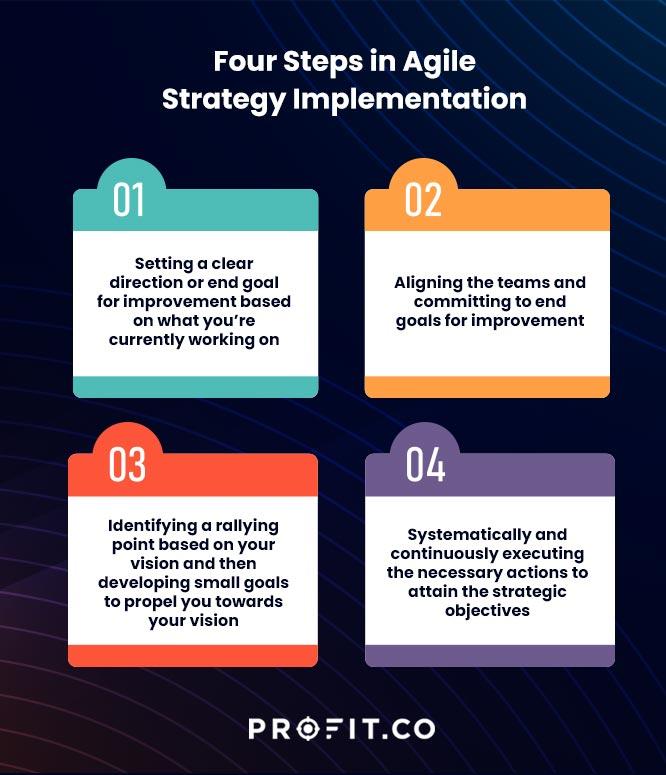
Staying Agile: Adapting Your Strategy Based on Feedback
In today’s rapidly evolving digital landscape, the importance of adaptability cannot be overstated. When it comes to content distribution, your strategy should be living and breathing—constantly evolving based on the feedback you receive from your audience. Ignoring this feedback is akin to sailing a ship without adjusting the sails according to the winds; you risk drifting off course.
First and foremost, engaging with your audience is crucial. Utilize social media platforms, emails, and comment sections to invite feedback. Ask direct questions like:
- What content do you find most valuable?
- How do you prefer to consume your content?
- Is there anything you would like to see more of?
By soliciting their opinions, you create a two-way street that fosters community and boosts engagement. Remember, your audience knows best what resonates with them. Listening to their insights can lead to tailor-made content that speaks directly to their needs.
Once you’ve gathered feedback, it’s time to analyze it. Use analytics tools to review engagement metrics, such as likes, shares, and comments. This data provides a treasure trove of information on what’s working and what isn’t. For instance, if a particular post performs exceptionally well, consider producing similar content in the future. You can also create a simple table to visualize feedback trends:
| Content Type | Engagement Rate | Feedback Summary |
|---|---|---|
| Video Tutorials | 85% | Highly appreciated for clarity and depth. |
| Infographics | 70% | Valuable but suggested for more topics. |
| Blog Posts | 50% | Good, but readers want shorter formats. |
Another effective technique is implementing A/B testing for your content distribution methods. This allows you to experiment with different headlines, formats, or platforms. Measure the outcomes and adapt your strategy based on what garners better responses. It could lead you to discover untapped channels or innovative formats your audience craves.
don’t shy away from iterating and refining your content based on what you learn. If a specific topic generates a lot of interest, delve deeper into that subject matter. Conversely, if certain content types fall flat, don’t be afraid to pivot. This agile approach not only enhances user experience but also positions your brand as responsive and engaged—invaluable traits in today’s market.
Adapting your distribution strategy based on real-time feedback is not just smart; it’s essential. Stay nimble, listen attentively, and let your audience guide your content journey. When you do, you’ll not only enhance your reach but also build a loyal community that eagerly awaits your every update.
Frequently Asked Questions (FAQ)
Q&A: Content Distribution Strategy: 15 Proven Techniques
Q1: What is content distribution, and why is it important for businesses?
A1: Great question! Content distribution is all about getting your valuable content in front of the right audience. It’s crucial because even the best content can fall flat if no one sees it. An effective distribution strategy amplifies your reach, engages your audience, and ultimately drives conversions. Think of it as the megaphone for your message!
Q2: Can you share a few of the proven techniques for distributing content?
A2: Absolutely! Here are a few standout techniques:
- Social Media Sharing: Leverage platforms like Facebook, Twitter, and LinkedIn to share your content. Tailor your message for each platform to maximize engagement.
- Email Marketing: Don’t underestimate the power of a well-crafted email. A targeted email campaign can drive significant traffic to your content.
- Influencer Collaborations: Partnering with influencers can help amplify your reach. They can introduce your content to their audience, which can lead to increased visibility and trust.
- Content Syndication: Publishing your content on third-party sites can reach a wider audience. Just ensure you’re choosing reputable platforms.
- SEO Optimization: Optimize your content for search engines to attract organic traffic. Use relevant keywords and compelling meta descriptions to draw in readers.
These are just a taste, but each technique has its own unique benefits!
Q3: How can I determine which distribution channels are best for my content?
A3: It’s all about understanding your audience! Think about where they hang out online. Conduct surveys, analyze your website traffic, and monitor social media engagement to identify which channels resonate most with your audience. It’s also wise to experiment with different channels and track your results to see what works best.
Q4: Is it necessary to use all 15 techniques, or should I focus on a few?
A4: While it’s tempting to try all 15 techniques, it’s more effective to focus on a few that align with your goals and audience. Quality over quantity! Start with two or three methods, refine them, and then expand your strategy as you gain insights and confidence.
Q5: How often should I distribute my content?
A5: Consistency is key! You don’t want to drown your audience in content, but regular updates help keep your brand top of mind. A good rule of thumb is to develop a content calendar that schedules consistent distribution—whether that’s daily, weekly, or monthly—while remaining flexible enough to adjust based on audience engagement.
Q6: What role does analytics play in content distribution strategy?
A6: Analytics are your best friend! They provide insights into how well your content is performing across different channels. By tracking metrics like engagement rates, click-through rates, and conversions, you can fine-tune your strategy, understand what resonates with your audience, and make informed decisions moving forward. Remember, data-driven decisions lead to better results!
Q7: Can I repurpose content for different distribution channels?
A7: Absolutely! Repurposing content is a smart way to maximize your investment. For instance, turn a blog post into an infographic, a podcast episode, or a video. Just make sure to adjust the format and messaging to fit the channel. This way, you reach different audience segments without having to create new content from scratch every time.
Q8: What’s the biggest mistake to avoid in content distribution?
A8: One common mistake is not tailoring your content for each platform. What works on Instagram may not resonate on LinkedIn. Always customize your messaging and presentation style based on the audience and format of each channel. Also, avoid neglecting engagement! Distribution isn’t just about posting; it’s about building relationships and interacting with your audience.
Q9: How do I keep my content fresh and engaging?
A9: Keep your content fresh by staying updated on industry trends, incorporating diverse formats (like videos and infographics), and experimenting with new ideas. Engaging with your audience through polls, questions, and user-generated content also adds a dynamic touch. Remember, the goal is to keep your audience interested and coming back for more!
Q10: What’s the takeaway from this discussion on content distribution?
A10: The takeaway is clear: an effective content distribution strategy is essential for success. By implementing the right techniques, you can significantly increase your content’s reach, foster engagement, and drive conversions. Don’t just create content—make sure it gets the attention it deserves! Start exploring these techniques today and watch your audience grow!
Feel free to tweak any of the Q&A sections to better align with your specific audience or article focus!
To Conclude
And there you have it—15 proven techniques to supercharge your content distribution strategy! It may seem overwhelming at first, but remember, the key is to start small and choose the methods that resonate most with your audience and goals.
Think of your content as a tree; without the right distribution, it won’t grow and flourish. By implementing these techniques, you’re not just sharing information; you’re nurturing conversations, building relationships, and expanding your reach.
So, what’s next? Dive in! Experiment with these strategies, track your results, and don’t be afraid to pivot if something isn’t working. The world of content distribution is ever-evolving, and staying adaptable is crucial.
Let’s get your content the attention it deserves and turn those ideas into impact. Remember, the right distribution strategy can make all the difference. Happy distributing!



